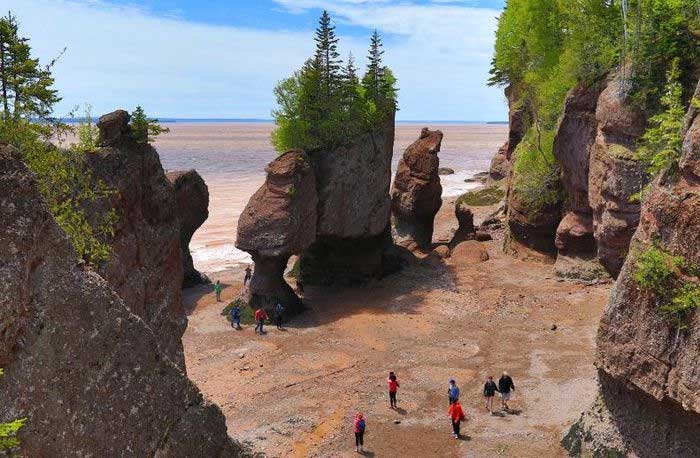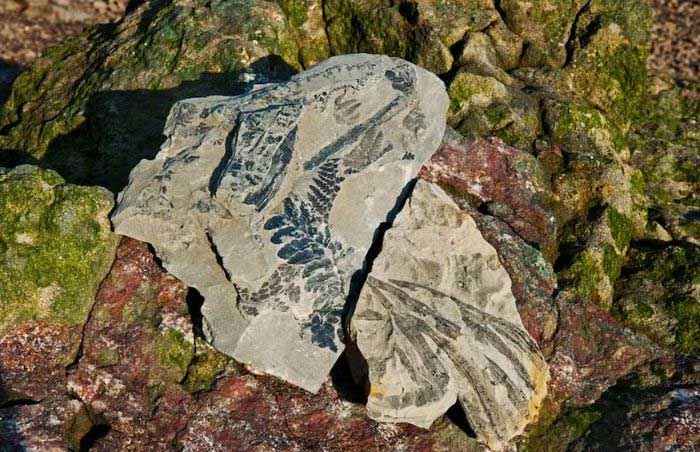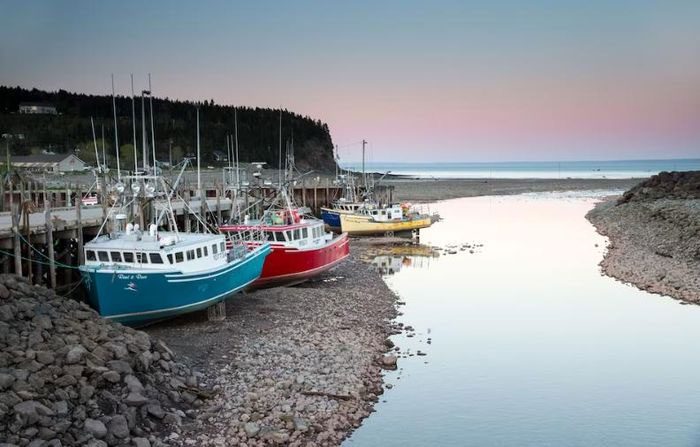If you want to see where dinosaurs roamed and giant ancient millipedes crawled, just follow their footprints. That’s exactly what scientists are doing in New Brunswick, Canada, where the highest tides in the world rise and fall more than 40 feet (about 12 m) twice a day at Fundy Bay. Amid rugged foothills and cliffs along the Atlantic Ocean, the receding tide unveils one of the richest fossil deposits in North America.

Tourists walking on the beach at low tide at Hopewell Rocks in New Brunswick, Canada. The coastline on Fundy Bay, home to the world’s highest tides, reveals fossils when the waters recede.
While scientists are actively researching this area, local residents and tourists are flocking here for sightseeing and fossil hunting, which scientists welcome as a valuable contribution since fossils can disappear at any moment.
Matt Stimson, the curator of geology and paleontology at the New Brunswick Museum in Saint John, the province’s largest city, stated: “It’s a race against the tide. ‘Mother Nature’ is doing the excavation work for us. Something new is constantly being exposed. But it can also be erased just as quickly.” Visiting this area allows tourists to see fossils and assist in the discovery of new ones.

Ancient ferns preserved in rocks washed ashore at Fundy Bay. The 170-mile-long basin in New Brunswick and Nova Scotia contains one of the richest fossil deposits in the Western Hemisphere.
Scientists have recognized the paleontological richness of New Brunswick since the 1840s, when coal mining activities uncovered fossilized flora and fauna.
Spanning three evolutionary eras of Earth, this region has been a cradle of invertebrate life; a biodiverse forest rich in oxygen that gave rise to dinosaurs; and a territory dominated by giant, furry humanoid creatures.
Recent significant discoveries include traces of both invertebrate and vertebrate animals, trapped in rocks along the Atlantic coast beaches.
Research associate at the New Brunswick Museum, Olivia King, has made several notable discoveries over the past three years. These include the jaw of a prehistoric reptile the size of a salamander and traces of the earliest dinosaurs, potentially the smallest on the continent (only about 2 inches long).
The “scientists” are tourists who have made many recent discoveries. Two local university students, Luke Allen and Rowan Norrad, have uncovered hundreds of artifacts over the years, including traces on the wings of a dragonfly the size of a hawk and footprints of amphibians dating back to Romer’s Gap.
Visitors can learn about the fossil history of New Brunswick at parks and reserves along the coast. Guides will take them on walking tours and kayak excursions. Additionally, there are beachcombing activities at low tide, where as the water recedes significantly, tourists can walk along the mudflats, with water trickling beneath the ocean’s surface.

Fishing boats resting on the beach during low tide at Fundy Bay.
Visitors can also search for fossils on their own, but should consult tide charts for safety; there are about six hours between high and low tide. When the tide begins to rise, it goes up one foot every six minutes and can easily flood a beach in less than an hour.
According to local regulations, any discoveries must be left in their original location and reported to the New Brunswick Museum, where researchers will come to assess them. If the find is significant, you might see your name displayed in the museum.


















































